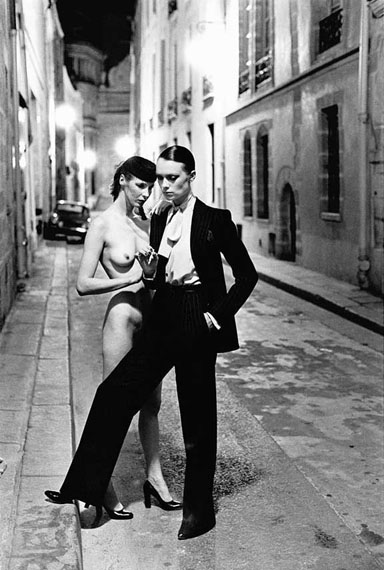
Rue Aubriot
Paris 1975
© Helmut Newton Estate
Helmut Newton »
Paris-Berlin.
Exhibition Grand Palais 2012
Exhibition: 1 Nov 2013 – 18 May 2014
Thu 31 Oct 20:00 - 22:00

Helmut Newton Foundation
Jebensstr. 2
10623 Berlin
+49 (0)30-31864856
info@helmut-newton-foundation.org
www.helmutnewton.com
Tue-Sun 11-19, Thu 11-20
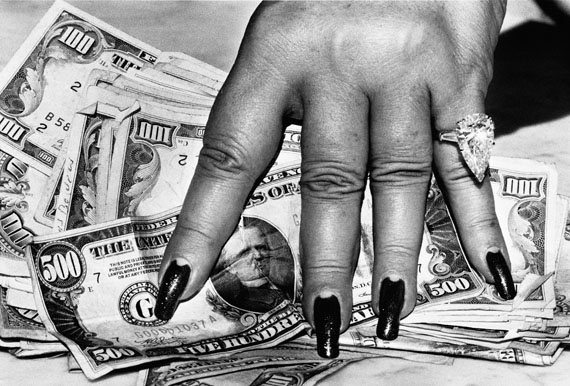
Fat hand and dollars
Monte Carlo, 1986
© Helmut Newton Estate
This retrospective exhibition, curated by June Newton and Jérôme Neutres, had been shown at the Grand Palais in Paris in 2012; it was the first comprehensive presentation of Newton’s work since his death in the French capital city where he lived and worked since 1961 for two decades. The show includes more than 200 photographs in black & white and color from all major work series and returns now to its source for a show in Berlin, and the path it has taken is reflected in its title.
While some of the images have been shown in earlier exhibition contexts at the Helmut Newton Foundation, others are presented here for the first time. With every new combination, new dimensions of the work of this renowned photographer allow themselves to be discovered. Customary expectations are challenged by the side-by-side presentation of an iconic image such as “Rue Aubriot, Paris 1975” with a second shot of the same motif, to which a nude model has been added. Here, Helmut Newton photographed a tuxedo by Yves Saint Laurent for French Vogue; this is hardly unusual – notwithstanding the fashion designer’s revolutionary creation – but the manner of photographic staging is unrivalled. A female model with short hair stands self-assured, smoking at night in a narrow, dimly lit alleyway; she appears to wait for no one. In his second photograph of the
model, at the same location but now with a nude model at her side, Newton intensifies the already confounding androgyny of the dressed woman. The combination of a clothed with a nude woman in the context of fashion was radical for its time and unfitting for publication in a fashion magazine like French Vogue. Furthermore Newton expanded upon this combination of clothed and nude models starting in the 1980s with his famous series “Naked and Dressed.” Two diptychs from this series are also included in the current show.
The exhibition also presents numerous portraits of notable figures ranging from Pierre Cardin to Margaret Thatcher, fashion photographs for magazines from the 1960s through the 1990s, nudes, as well as product shots. Another highlight are the “Fired” images: the legendary Courrèges photographs that were first published in 1964 in the fashion magazine Queen, and which resulted in Newton’s immediate dismissal from Vogue. These images brilliantly translate the ultra-modern designs of the French designer into the photographic image, challenging convention with the women’s pants, the above-the-knee dresses, and above all the spectacular space-age look. At the time, the image and social status of women at the time were undergoing radical change.
With this exhibition, the Helmut Newton Foundation in Berlin celebrates an anniversary: ten years ago, in the fall of 2003, Helmut Newton established his foundation in a partnership with the Prussian Cultural Heritage Foundation. In the summer of 2004, his Foundation within the Museum for Photography opened its doors in a former military casino, with a double exhibition. The photographer himself was never able to experience the show, as he passed away in Los Angeles shortly before its opening. Yet Helmut Newton lives on through his work. Regular exhibitions are organized and presented not only in Berlin, but made available on loan to various institutions throughout Europe. The 2012 exhibition at the Grand Palais in Paris is one such example.
On the occasion of the exhibition, the publication „Helmut Newton 1920-2004“, Paris: Grand Palais, 2012, was published.�
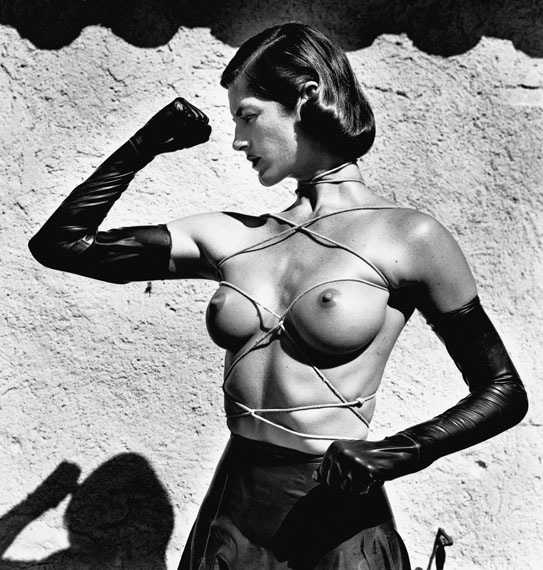
Tied-up Torso
Ramatuelle, 1980
© Helmut Newton Estate
Das Grand Palais in Paris zeigte 2012 diese retrospektive Ausstellung, kuratiert von June Newton undJérôme Neutres, die erste Übersichtspräsentation seit dem Tod des Photographen in der französischen Hauptstadt, in der er seit 1961 lebte und so erfolgreich wirkte. Anhand von mehr als 200 Schwarz-Weiß- und Farbaufnahmen aus allen wichtigen Werkgruppen Newtons sorgte sie dort für eine breite Publikums- und Medienresonanz. Jene Ausstellung kehrt nun zu ihrem Ausgangspunkt in die Helmut Newton Stiftung nach Berlin zurück, vor diesem Hintergrund ist auch der Ausstellungstitel zu verstehen.
Manche Aufnahmen waren hier bereits in früheren Ausstellungskontexten zu sehen, andere werden zum ersten Mal gezeigt. Doch auch für Bildikonen gilt: Mit jeder neuen Kombination kann selbst das Werk eines bekannten Photographen neu entdeckt werden. Die Gegenüberstellung einer ikonischen Aufnahme wie „Rue Aubriot, Paris 1975“ mit einer zweiten durch ein Aktmodell ergänzten Photographie beispielsweise erweitert die für Newton übliche Rezeption. Helmut Newton hat einen Damensmoking von Yves Saint Laurent für die französische Vogue photographiert; das weibliche Modell mit Kurzhaarschnitt steht rauchend und selbstbewusst nachts in einer schmalen, spärlich beleuchteten Gasse und scheint auf niemanden zu warten. Mit einer zweiten Aufnahme des Modells am gleichen Ort und einem Aktmodell an dessen Seite steigerte er die verwirrende Androgynität der bekleideten Frau. Die Kombination einer bekleideten und einer nackten Frau im Modekontext war ziemlich radikal und eine solche Aufnahme für die Veröffentlichung in einem Modemagazin wie die französische Vogue ungeeignet; so veröffentlichte Helmut Newton diese zweite Aufnahme 1976 in seiner ersten Publikation „White Women“. Die Kombination bekleideter und unbekleideter Modelle formulierte Helmut Newton ab 1980 in der berühmten Serie „Naked and Dressed“ systematisch aus; einige Jahre später war dies auch für ein renommiertes Modemagazin kein Tabubruch mehr. Zwei Diptychen jener Serie, die bereits Mitte der 1970er-Jahre in der Rue Aubriot vorbereitet wurde, sind Bestandteil der aktuellen Ausstellung.
Daneben finden sich Porträts zahlreicher Prominenter von Pierre Cardin bis Margaret Thatcher, Modebilder für die Modemagazine aus den 1960er bis 1990er-Jahren sowie Akt- und Produktaufnahmen; darunter finden sich auch Aufnahmen aus „Fired“, etwa die legendären Courrèges-Aufnahmen, veröffentlicht 1964 im Modemagazin Queen, die damals der Grund für Newtons kurzfristigen Rauswurf bei der Vogue waren, übersetzten die ultramodernen Entwürfe des französischen Designers kongenial ins photographische Bild. Revolutionär waren die Hosen für Frauen, die kniefreien Kleider und vor allem der spektakuläre Weltraum-Look. Das Frauenbild und die gesellschaftliche Position der Frauen befanden sich in einem radikalen Wandel.
Die Helmut Newton Stiftung feiert mit dieser Ausstellung ein Jubiläum: Helmut Newton gründete vor zehn Jahren, also im Herbst 2003, eine Stiftung und schloss einen Kooperationsvertrag mit der Stiftung Preußischer Kulturbesitz. Nach einer kurzen Umbauphase öffnete das „Museum für Fotografie“ im Sommer 2004 mit einer Doppelausstellung, die Newton selbst nicht mehr erleben konnte, da er kurz zuvor in Los Angeles verstarb. Doch durch sein Werk lebt er weiter. Nicht nur in der Berliner Stiftung werden regelmäßig Ausstellungen organisiert und präsentiert, sondern von hier aus an verschiedene Institutionen in Europa ausgeliehen, so auch 2012 nach Paris.
Zur Ausstellung erschien die Publikation „Helmut Newton 1920-2004“, Paris: Grand Palais, 2012.�
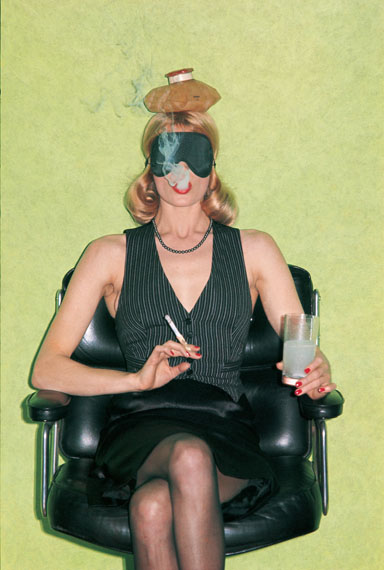
Nova
Paris, 1973
© Helmut Newton Estate
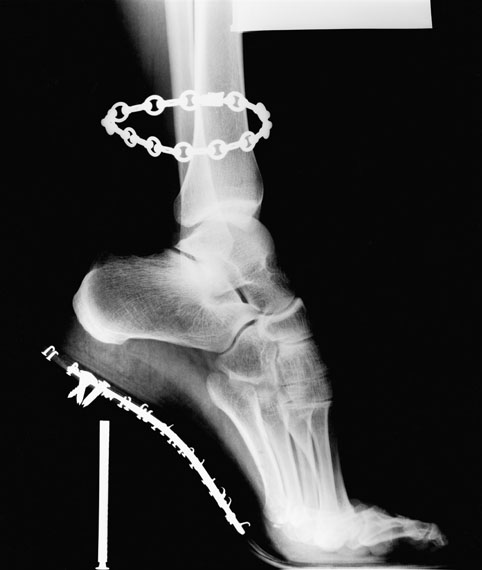
X-Ray, Van Cleefs & Arpels
French Vogue, Paris 1994
© Helmut Newton Estate